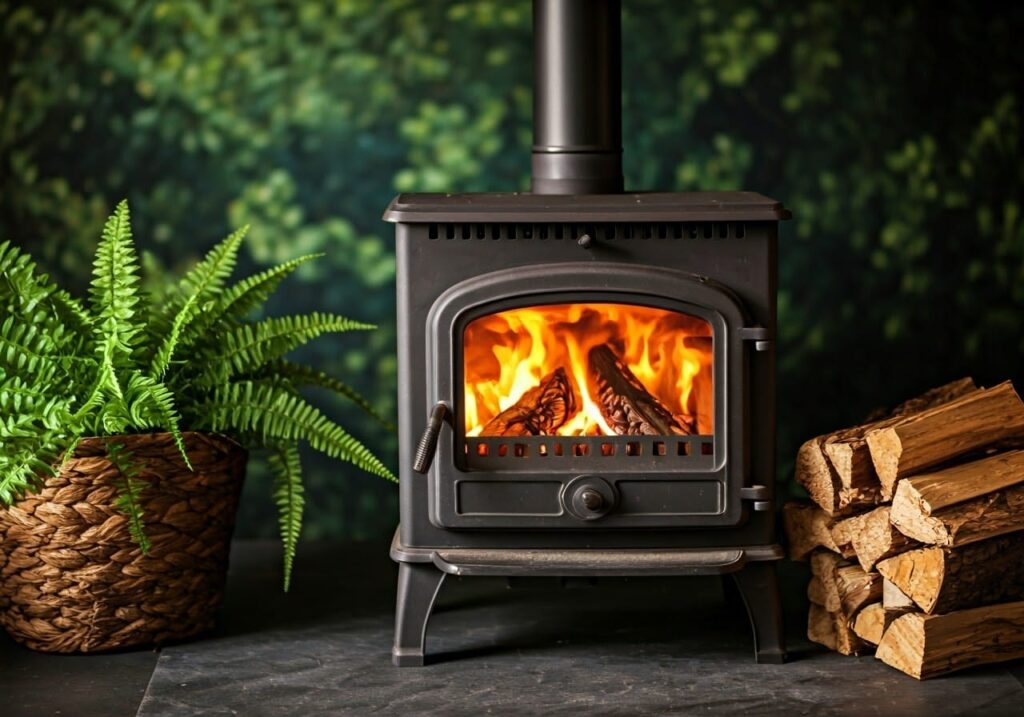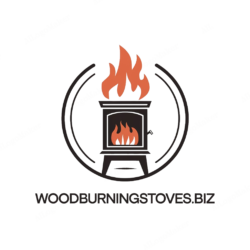Understanding the environmental implications of wood burning stoves is crucial for homeowners and environmental advocates alike. This comprehensive guide explores the complex relationship between wood heating and environmental sustainability.

Introduction
Wood burning stoves have been a traditional heating source for centuries, offering warmth and comfort to millions of homes worldwide. However, as environmental consciousness grows, it’s essential to examine their impact on our ecosystem and air quality. This analysis delves into the various environmental aspects of wood stove usage, helping you make informed decisions about your heating choices.
Listen to our Podcast
Environmental Impact Overview
As a significant source of domestic heating, wood burning stoves have substantial environmental implications. This overview examines the air quality impacts of wood burning stoves, highlighting key pollutants and their far-reaching consequences for both indoor air quality and the broader ecological and public health landscape.
Air Quality Considerations
Wood burning stoves emit several types of pollutants that can affect both indoor and outdoor air quality:
- Particulate matter (PM2.5 and PM10)
- Carbon monoxide
- Nitrogen oxides
- Volatile organic compounds (VOCs)
- Polycyclic aromatic hydrocarbons (PAHs)
These emissions contribute to local air pollution and can have significant health implications for both users and neighboring communities.
Carbon Footprint Analysis
Often perceived as carbon-neutral, the true environmental impact of wood burning stoves is more complex. This analysis delves into the nuanced carbon cycle of wood combustion, examining key factors that influence its overall carbon footprint, revealing a more accurate picture of its ecological consequences.
The carbon cycle of wood burning is often misunderstood. While trees absorb CO2 during growth, making wood appear carbon-neutral, several factors affect the overall carbon footprint:
- Harvesting methods
- Transportation distance
- Wood processing energy
- Burning efficiency
- Replacement tree growth time
Understanding these elements helps evaluate the true environmental impact of wood burning stoves.
Efficiency and Modern Technology
The traditional wood burning stove has undergone a transformative shift. This section highlights cutting-edge innovations – from enhanced combustion systems to smart monitoring – that have dramatically boosted efficiency, slashing emissions by up to 70% and redefining the environmental and performance standards for modern wood burning stoves.
Recent technological advancements have significantly improved wood stove efficiency:
- Secondary combustion systems
- Catalytic converters
- Advanced airflow control
- Improved insulation
- Electronic monitoring systems
These innovations can reduce emissions by up to 70% compared to older models.
Best Practices for Environmental Protection
Minimize your ecological footprint with informed wood burning practices. This section outlines essential guidelines for environmentally conscious wood stove operation, covering optimal wood selection and storage, and regular maintenance routines, to ensure a cleaner, more sustainable, and responsible burning experience.
Proper Wood Selection and Storage
- Use seasoned wood with moisture content below 20%
- Store wood properly to maintain optimal dryness
- Choose sustainable wood sources
- Avoid burning treated or painted wood
- Select hardwoods for longer, cleaner burns
Maintenance Requirements
Regular maintenance ensures optimal performance and minimal environmental impact:
- Annual chimney cleaning
- Gasket inspection and replacement
- Ash removal and disposal
- Air intake cleaning
- Catalyst inspection (if applicable)
Environmental Regulations and Standards
Ensure your wood burning stove meets the latest eco-protective mandates. This section provides an overview of current regulatory frameworks, including EPA certifications, emission caps, efficiency benchmarks, installation protocols, and local air quality ordinances, helping you stay compliant and environmentally responsible.
Current regulations aim to balance traditional heating methods with environmental protection:
- EPA certification requirements
- Emission limits
- Efficiency standards
- Installation guidelines
- Local air quality regulations
Environmental Impact Score Calculator
Looking to understand your wood stove’s environmental impact? Our interactive Wood Stove Emissions Calculator helps you make informed decisions about your heating practices. Simply adjust the sliders to match your daily usage, stove efficiency, and maintenance routine, then select your preferred wood type. The calculator instantly analyzes these factors to provide you with an environmental impact score and emission level assessment. Whether you’re burning oak, maple, pine, or other woods, this tool helps you optimize your wood-burning practices for minimal environmental impact. Use it to find the perfect balance between warmth and environmental responsibility.
Wood Stove Emissions Calculator
Future Considerations
The future of wood burning stoves depends on:
- Technological innovations
- Environmental policy development
- Public awareness and education
- Alternative fuel development
- Climate change mitigation strategies
Recommendations for Environmentally Conscious Use
Optimize your wood burning stove's eco-friendliness with simple, impactful adjustments. Discover actionable tips to significantly reduce your environmental footprint, from upgrading to certified models and mastering burning techniques, to mindful wood sourcing and thoughtful usage habits, for a more sustainable heating experience.
To minimize environmental impact:
- Upgrade to EPA-certified models
- Follow proper burning techniques
- Maintain equipment regularly
- Use sustainable wood sources
- Consider weather conditions before burning
Conclusion
Wood burning stoves remain a viable heating option when used responsibly. Understanding their environmental impact and following best practices helps minimize negative effects while maintaining their benefits as a heating source.
